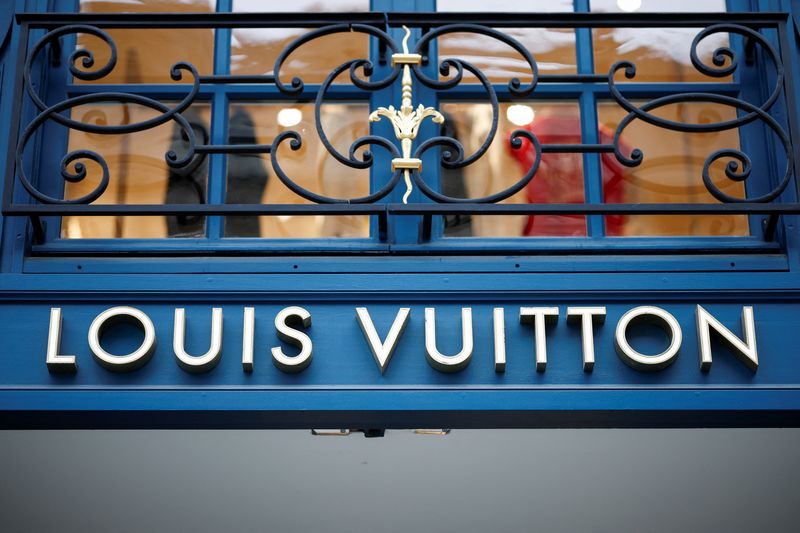
- Company overview
- Current trends
4 brands owned by the LVMH conglomerate
Do you want to know how to make money from this?
Register for free and get expert advice, access to a training course and webinars.
Recently, luxury conglomerate Kering, which owns Gucci, Saint Laurent and Balenciaga, saw its shares plummet by 15%. This became an alarm bell for the company’s competitors, for example, LVMH. Today we will tell you more about this company.
Moët Hennessy Louis Vuitton SE – or otherwise LVMH/Louis Vuitton – is a French conglomerate specializing in luxury goods. It was created in 1987 through the merger of the legendary fashion house Louis Vuitton and the wine and spirits company Moët Hennessy. This merger was the catalyst for the formation of one of the leaders in the global luxury goods market.
A brief history of the LVMH conglomerate
Although LVMH in its modern form has been around since 1987, its history goes back to 1854, when Louis Vuitton was founded. Today, LVMH is a giant in the luxury goods industry, owning 75 brands distributed across six business groups:
- wines and spirits;
- fashion and leather goods;
- perfumes and cosmetics;
- watches and jewelry;
- selective retail;
- other types of activities.
Since 1989, the company has been headed by Bernard Arnault, who, having acquired a controlling stake, set LVMH on a path of rapid development. Over the past three decades, many successful acquisitions have been made, allowing LVMH to become a market leader.
The secret to LVMH’s success lies in its diversification strategy, which involves owning multiple luxury brands in different segments. In 2020, the company showed impressive results: net profit amounted to 4.7 billion euros and revenue of 44.7 billion euros ($53.0 billion).
Tiffany & Co.
Tiffany Jewelry House was founded by Charles Lewis Tiffany in 1837. Since then, he has established himself as one of the world’s leading designers, gaining a reputation for his innovative jewelry design and impeccable craftsmanship. Tiffany offers its customers a wide range of products, including necklaces, bracelets, earrings, rings, watches, as well as various home accessories and fragrances.
At the end of 2019, LVMH announced plans to acquire Tiffany for $16.2 billion. However, the coronavirus pandemic and its negative impact on the luxury jewelry market prompted Bernard Arnault, head of LVMH, to reconsider the terms of the deal.
LVMH’s initial demand for an 11% discount from the original price prompted a lawsuit by Tiffany, which sought to force LVMH to honor the original agreement. As a result, the parties agreed on a price of $131.50 per share, which is 2.6% lower than the original price. As a result, the total transaction amount was $15.8 billion.
The LVMH-Tiffany deal was a landmark event in the luxury goods industry, bringing together two iconic brands with a rich history and impeccable reputation.
Bulgari
Founded by Sotirio Bulgari in 1884, Bulgari has been a leader in the luxury goods market since its inception thanks to its creativity and distinctive jewelry designs. In March 2011, LVMH announced a deal that significantly expanded the company’s watches and jewelry business group. The deal included the purchase of a 50.4% stake in Bulgari from the Bulgari family, as well as a tender offer to acquire the remainder of the company.
The acquisition of Bulgari was an important step for LVMH, allowing the company to strengthen its position in the luxury watches and jewelry segment. Known for its impeccable craftsmanship and distinctive style, Bulgari has become a valuable asset in the LVMH portfolio. Although the Watches and Jewelry business group remains one of LVMH’s smallest in terms of profit, it has shown steady growth.
Fendi
Fendi, founded in 1925 by Adele and Edoardo Fendi, is one of the most famous Italian fashion houses. The company became famous for its fur and leather goods, as well as other luxury goods. LVMH began its path to owning Fendi in 2000, purchasing a 25.5% stake in the company. That same year, Prada acquired a similar stake. In November 2001, LVMH became the majority shareholder of Fendi by purchasing Prada’s stake.
The acquisition of Fendi was an important step for LVMH, allowing the company to expand its portfolio of luxury brands and strengthen its position in the luxury goods market. Known for its rich heritage and innovative designs, Fendi has become a valuable asset for LVMH. The deal with Fendi marks another milestone in the history of LVMH, demonstrating the company’s commitment to continuous growth and development.
Christian Dior
Christian Dior, founded in 1946, is one of the most famous brands in the world, famous for its designer clothing and accessories. The brand is part of the LVMH Fashion and Leather Goods group, which is one of the most profitable in LVMH.
Dior became the cornerstone of the Arnault empire. The brand not only brings impressive profits to LVMH, but is also a symbol of luxury and sophistication. In 2017, LVMH and Arnault completed a deal to consolidate Dior shares, buying out minority shares for $13.1 billion. This allowed LVMH to fully control this legendary brand.
Do you want to know
How to make money from the news
Register for free and get:
- Expert consultation;
- Access to the training course;
- Opportunity to participate in webinars

